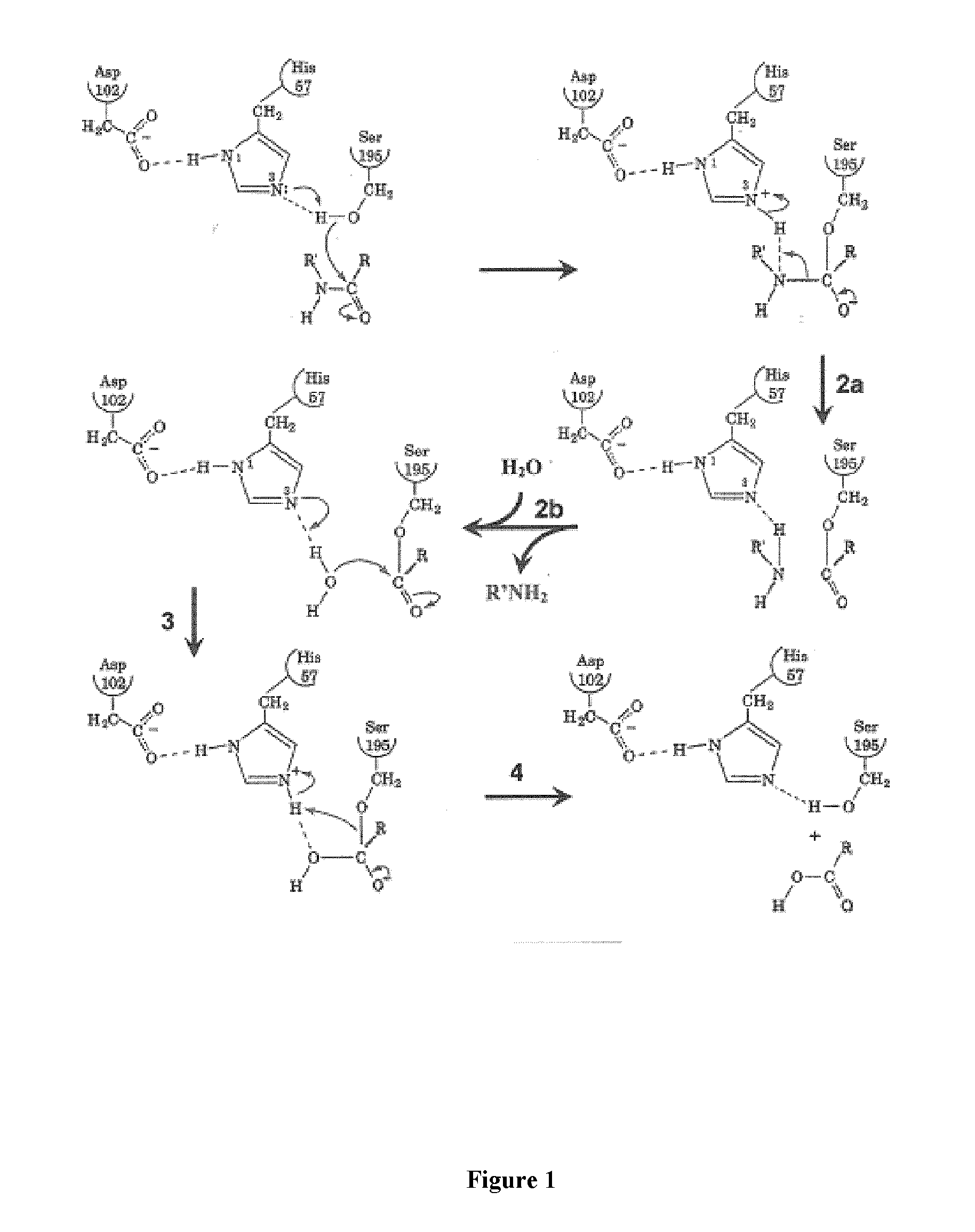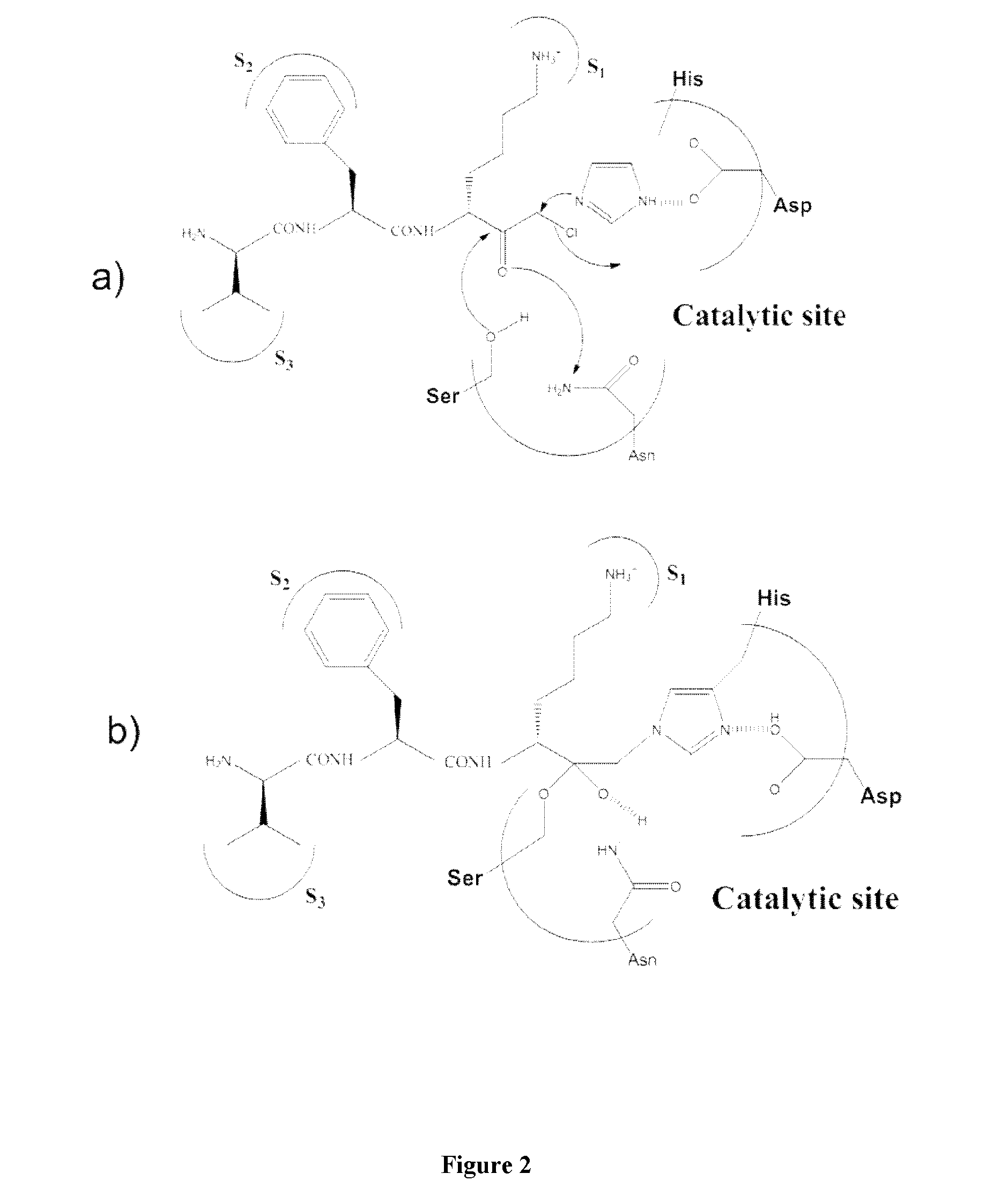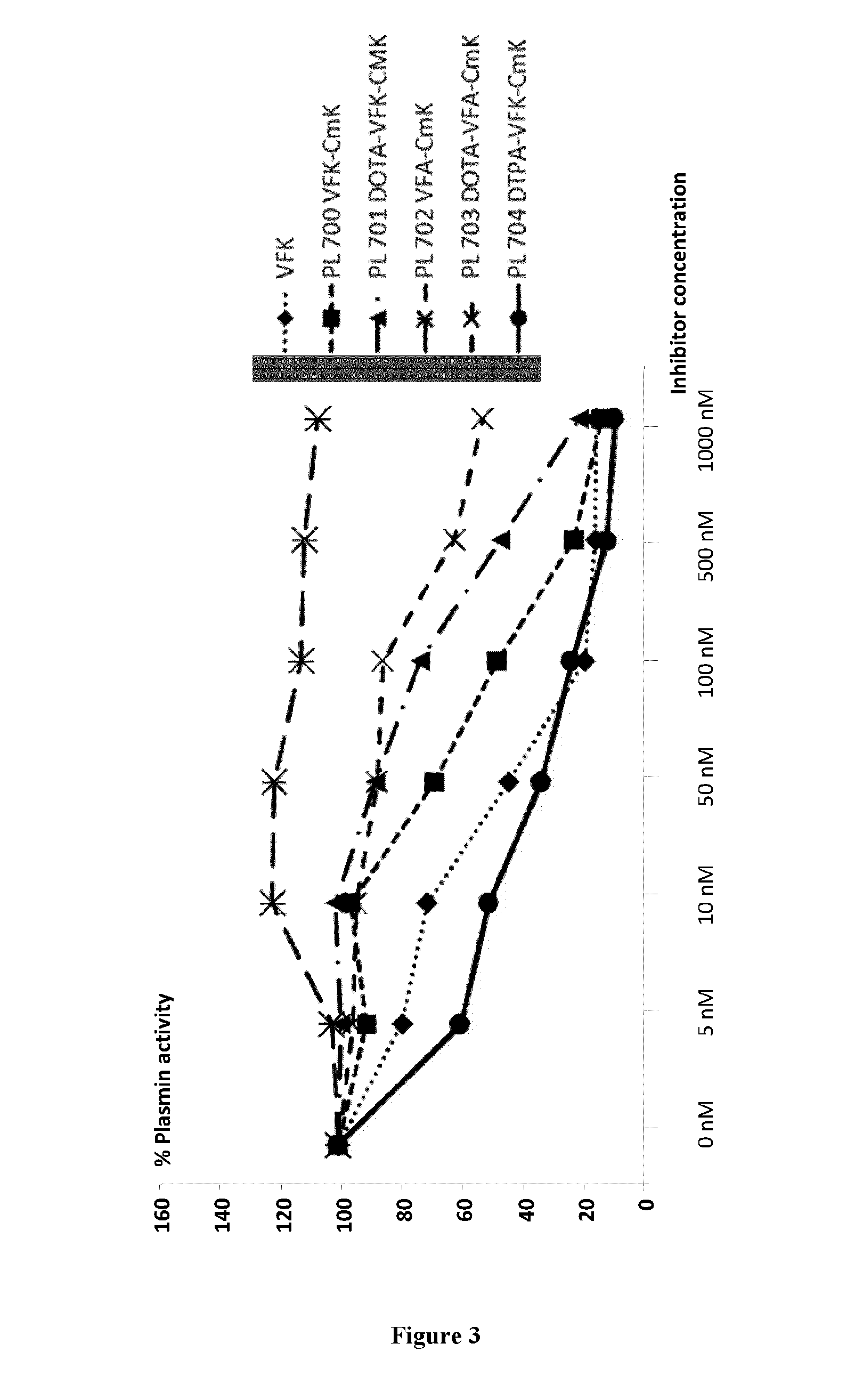Agents for the molecular imaging of serine-protease in human pathologies
a technology of molecular imaging and serine proteases, which is applied in the direction of peptides, enzyme stabilisation, therapy, etc., can solve the problems of irreversible inhibitors not possessing the required parameters, and no investigation has been carried out to use irreversible ligands for the molecular imaging of serine proteases
- Summary
- Abstract
- Description
- Claims
- Application Information
AI Technical Summary
Benefits of technology
Problems solved by technology
Method used
Image
Examples
example 1
Design of a Peptide Ligand for Plasmin Molecular Imaging
[0081]Plasmin catalyses the cleavage of Lys-X or Arg-X bonds with specificity similar to that of trypsin, but with a lesser efficiency for hydrolysis of these bonds in proteins. In this family of proteases the selectivity of the enzyme is essentially ensured by the amino acid interacting with the S1 subsite and, consequently plasmin is able to cleave esters or amides of Lys and Arg as well as small peptide substrate recognizing the S3 to S1 subsites of the enzyme and containing a C-terminal lysine or arginine {Lottenberg, 1981}. Likewise, small three amino acids peptide analogues, such as leupeptin (Ac-Leu-Leu-Arg-H), are efficient competitive inhibitors with Ki values in the 10−7 molar range {Chi, 1989}.
[0082]However, to obtain an efficient labeling of the peptidase for molecular imaging, an irreversible inhibitor has been chosen as starting material for the design of such a marker. Indeed, the replacement of the C-terminal ca...
example 2
In Vitro Ligation of the Plasmin Active Site by PL704
[0101]Material and Methods:
[0102]Determination of plasmin activity: 10 nM of plasmin from human plasma (calbiochem) was diluted in Tris-HCl buffer pH 7.4 50 mM, NaCl 100 mM and Tween-20 0.01%. The samples were then incubated or not with the different inhibitors (see below) for 15 minutes at room temperature. Then, the fluorescent substrate (Suc-Ala-Phe-Lys-AMC, 40 mM) was added just before reading (λ excitation 390 nm, λ emission 460 nm) on the Fluoroskan Ascent plate reader (Thermo Fisher). The fluorescence intensity was evaluated every 10 minutes for 2 hours at 37° C.—The integration time for each measure was 20 ms.
[0103]Each inhibitor was tested in a range of concentrations from 5 nM up to 1000 nM. All the inhibitors were tested in duplicates for each concentration and 4 independent experiments were performed.
[0104]Statistical analysis: Results are presented as % of active plasmin. The differences between the concentrations of ...
example 3
Ex Vivo and In Vivo Scintigraphy
[0108]Material and Methods:
[0109]Experimental models: we have used several experimental models of endovascular thrombus formation in rats, which have been already developed for molecular molecular imaging of platelet activation and fibrin formation, including aneurysm of the abdominal aorta {Sarda-Mantel, 2006}, endocarditic vegetations {Rouzet, 2008}. Aneurysm of the aorta was induced by matrix decellularized xenograft in rats {Allaire, 1996}, and endocarditis by left or right ventricle catheterization followed by provoked bacteraemia {Rouzet, 2008} as previously described. These thrombus models were completed by a model of stroke, provoked by cerebral autologous thrombus emboli in rats (reference).
[0110]These experimental models were also compared to 99m Tc aprotinin signal ex vivo on human aneurymal thrombus.
[0111]Radiolabelling Procedures:
[0112]Aprotinin labelling with 99m Technetium: Aprotinin labelling was performed according to a procedure modi...
PUM
| Property | Measurement | Unit |
|---|---|---|
| Molar density | aaaaa | aaaaa |
| Molar density | aaaaa | aaaaa |
| Molar density | aaaaa | aaaaa |
Abstract
Description
Claims
Application Information
 Login to View More
Login to View More - R&D
- Intellectual Property
- Life Sciences
- Materials
- Tech Scout
- Unparalleled Data Quality
- Higher Quality Content
- 60% Fewer Hallucinations
Browse by: Latest US Patents, China's latest patents, Technical Efficacy Thesaurus, Application Domain, Technology Topic, Popular Technical Reports.
© 2025 PatSnap. All rights reserved.Legal|Privacy policy|Modern Slavery Act Transparency Statement|Sitemap|About US| Contact US: help@patsnap.com



